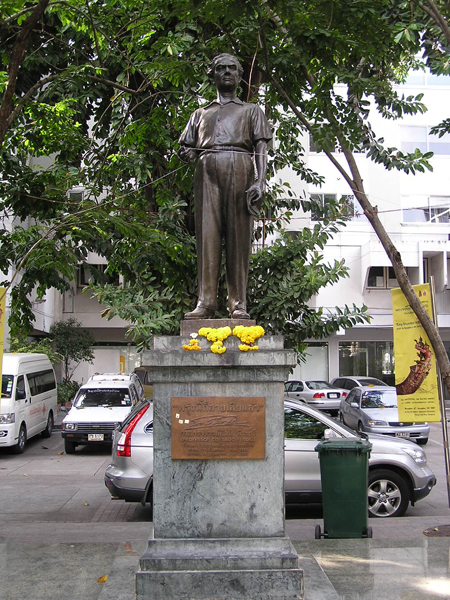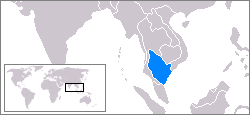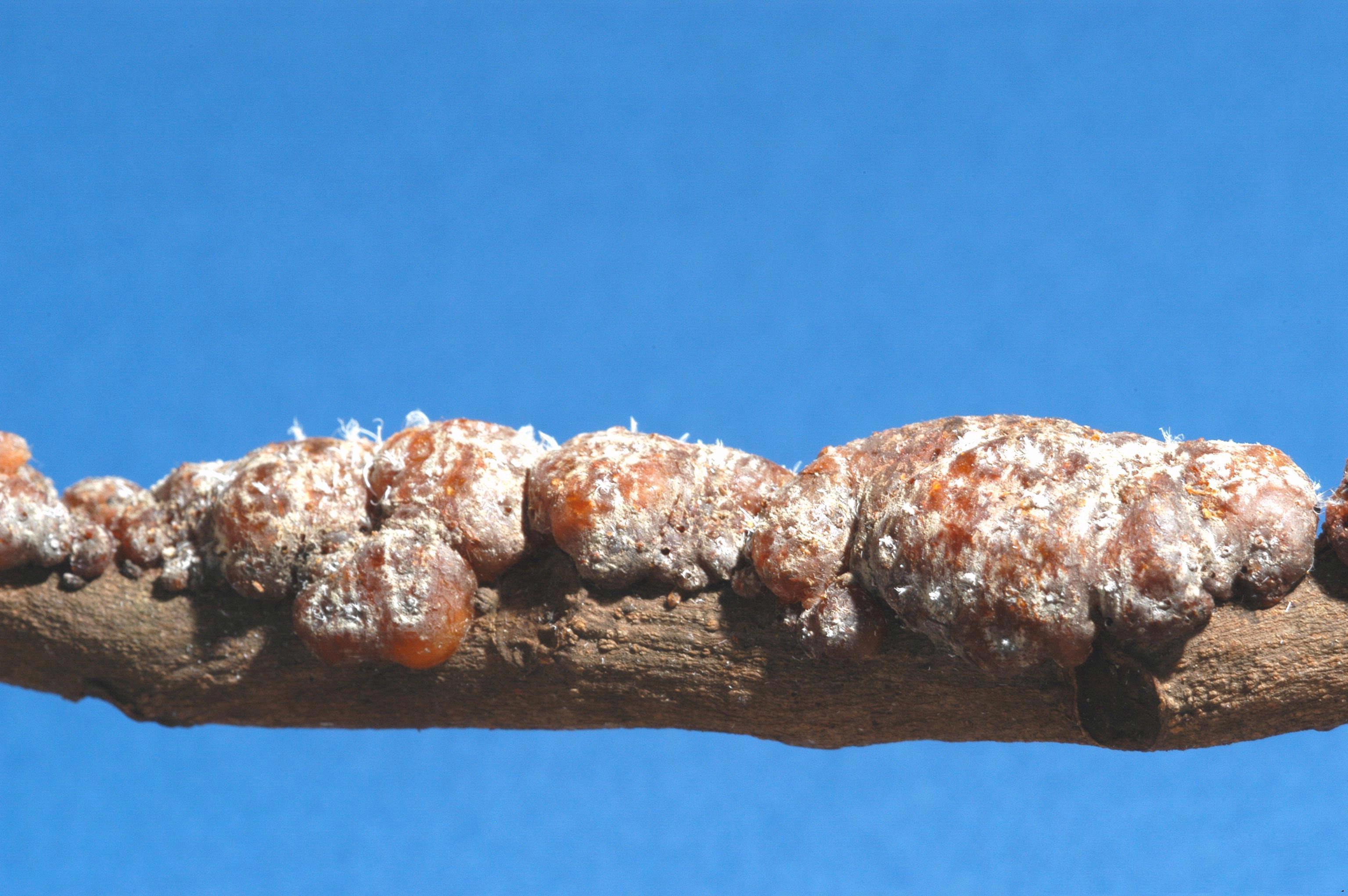|
Thaitone
Thaitone is a color scheme designed to follow colors used in traditional Thai art. It was compiled by Pairoj Pittayamatee, and is the result of ten years study about the traditional color making and using in Thailand art history for his master's and doctoral degrees at Silpakorn University. The identity of Thai color is a hundred percent made by natural ingredients, plants and minerals that can be found in Thailand. The shade is soft and not too vivid. The problem is the color will not be exactly the same color in each time of making because it is the handmade product. To make the use of Thaitone color scheme universal, Professor Pairoj set the aim of the study to research and compare Thai's color scheme with CMYK color model by using Pantone color system and collected them as a database for everyone especially for Thai designers who can adapt the Thaitone color to use in design world nowadays. Now (Jan 2017), there are 156 colors identified in CMYK color standard.''"Ó╣äÓĖŚÓĖóÓ╣éÓĖ ... [...More Info...] [...Related Items...] OR: [Wikipedia] [Google] [Baidu] |
Thai Art
Thai art refers to a diverse range of art forms created in Thailand from prehistoric times to the present day, including architecture, sculpture, painting, textiles, decorative arts, crafts, ceramics, and more. While Buddhism has played a significant role in Thai art, with many sculptures and paintings depicting Buddhist art, Buddha images and religious themes, nature, including flora and fauna, as well as mythical creatures, has been a major inspiration for Thai art, with colorful Motif (visual arts), motifs appearing in various types of art forms. In contemporary Thai art, traditional works remain significant and continue to influence artists' concepts. History Prehistory One of the earliest examples of artistic expression in Thailand can be found in over 410 documented rock art sites across the country, featuring both prehistoric and historic art. The majority of these sites showcase monochrome red pictograms that depict animals, humans, geometric shapes, and handprints. Whil ... [...More Info...] [...Related Items...] OR: [Wikipedia] [Google] [Baidu] |
Color Scheme
In color theory, a color scheme is a combination of 2 or more colors used in aesthetic or practical design. Aesthetic color schemes are used to create style and appeal. Colors that create a harmonious feeling when viewed together are often used together in aesthetic color schemes. Practical color schemes are used to inhibit or facilitate color tasks, such as camouflage color schemes or high visibility color schemes. Qualitative and quantitative color schemes are used to encode unordered categorical data and ordered data, respectively. Color schemes are often described in terms of logical combinations of colors on a color wheel or within a color space. Harmonious schemes Harmonious color schemes are designed to accomplish an aesthetic color task and enhance color harmony. They do not represent any underlying variable. The color scheme of a logo is typically purely aesthetic. A color scheme in marketing is referred to as a trade dress and can sometimes be protected by ... [...More Info...] [...Related Items...] OR: [Wikipedia] [Google] [Baidu] |
Silpakorn University
Silpakorn University (SU.) (; ) is a national university in Thailand. The university was founded in Bangkok in 1943 by TuscanŌĆōborn art professor Corrado Feroci, who took the Thai name Silpa Bhirasri when he became a Thai citizen. It began as a fine arts university and now includes many other faculties as well. In 2016, it has 25,210 students. History Silpakorn University was originally established as the School of Fine Arts under Thailand's Fine Arts Department in 1933. The school offered the only painting and sculpture programs and waived tuition fees for government officials and students. Its creation owes much to the almost lifetime devotion of Professor Silpa Bhirasri, an Italian sculptor (formerly Corrado Feroci) who was commissioned during the reign of King Rama VI to work in the Fine Arts Department. He subsequently enlarged his classes to include greater members of the interested public before setting up the School of Fine Arts. The school gradually developed and ... [...More Info...] [...Related Items...] OR: [Wikipedia] [Google] [Baidu] |
CMYK Color Model
The CMYK color model (also known as process color, or four color) is a subtractive color model, based on the CMY color model, used in color printing, and is also used to describe the printing process itself. The abbreviation ''CMYK'' refers to the four ink plates used: cyan, magenta, yellow, and key (most often black). The CMYK model works by partially or entirely masking colors on a lighter, usually white, background. The ink reduces the light that would otherwise be reflected. Such a model is called ''subtractive'', as inks ''subtract'' some colors from white light; in the CMY model, white light minus red leaves cyan, white light minus green leaves magenta, and white light minus blue leaves yellow. In additive color models, such as RGB, white is the ''additive'' combination of all primary colored lights, and black is the absence of light. In the CMYK model, it is the opposite: white is the natural color of the paper or other background, and black results from a full ... [...More Info...] [...Related Items...] OR: [Wikipedia] [Google] [Baidu] |
Pantone
Pantone LLC (stylized as PANTONE) is an American limited liability company headquartered in Carlstadt, New Jersey, and best known for its Pantone Matching System (PMS), a proprietary color order system used in a variety of industries, notably graphic design, fashion design, product design, printing, and manufacturing and supporting the management of color from design to production, in physical and digital formats, among coated and uncoated materials, cotton, polyester, nylon and plastics. X-Rite, a supplier of color measurement instruments and software, purchased Pantone for US$180 million in October 2007, and was itself acquired by Danaher Corporation in 2012. At the end of September 2023, Danaher spun-off its Environmental and Applied Solutions segment as Veralto Corporation. History Pantone began in New Jersey in the 1950s as the commercial printing company of brothers Mervin and Jesse Levine, M & J Levine Advertising. In 1956, its founders, both advertising executives, hi ... [...More Info...] [...Related Items...] OR: [Wikipedia] [Google] [Baidu] |
Gulf Of Thailand
The Gulf of Thailand (), historically known as the Gulf of Siam (), is a shallow inlet adjacent to the southwestern South China Sea, bounded between the southwestern shores of the Indochinese Peninsula and the northern half of the Malay Peninsula. It is around in length and up to in width, and has a surface area of . The gulf is surrounded on the north, west and southwest by the coastlines of Thailand (hence the name), on the northeast by Cambodia and the Mekong Delta region of Vietnam, and opens to the South China Sea in the southeast. Names The modern Thai language, Thai name of the gulf is ''Ao Thai'' (, , 'Thai Gulf') and "Gulf of Thailand" has been adopted as the official name of the body by the International Hydrographic Organization. Its name in Malay language, Malay is "Gulf of Siam", ''Teluk Siam'' or in Jawi script: , and in '', Chhoung Samut Siem''. In Thai, the gulf is historically known as ''Ao Sayam'' (). In Vietnamese language, Vietnamese it is known as ''Vß╗ŗn ... [...More Info...] [...Related Items...] OR: [Wikipedia] [Google] [Baidu] |
Benjarong
''Benjarong'' ( Thai Ó╣ĆÓĖÜÓĖŹÓĖłÓĖŻÓĖćÓĖäÓ╣ī) porcelain ware is a kind of painted Thai ceramics. While the name literally means "five colours (Wucai)," it is a figurative description and actual decoration can have anywhere between three and eight colours. For the decoration, repetitive forms, usually geometric or flower-based, are used. A design is usually named after the decoration base name and a background color (for example, Phum Kao Bin on dark blue). Enamel colors are applied and overglazed, creating a swelling effect over the surface of the piece. The production process is extremely labor-intensive, as each color is applied individually and the piece is kiln fired after the application of each color. The firing process brightens the colors of the finished piece and adds to its beauty. Gold is also used in painting the porcelain. History The earliest trace of Benjarong ever recorded is back to the Ming dynasty in China (1368ŌĆō1644 A.D.). In the reign of Xuande Empero ... [...More Info...] [...Related Items...] OR: [Wikipedia] [Google] [Baidu] |
Adenanthera Pavonina
''Adenanthera pavonina'' is a Perennial plant, perennial and non-climbing species of leguminous tree. Its uses include food and drink, traditional medicine, and timber. Common names Common names for ''Adenanthera pavonina'' include Acacia coral, arbre ├Ć ├ēglise, bead tree, Circassian seed, corail v├®g├®tal, coral wood, madhoshi, moralitos, curly bean, deleite, Delicia, dilmawi, Graine-r├®glisse, jumbi-bead, l'├ēglise, peron├Łas, Peon├Ła, Peon├Ła extranjera, piriquiti, red bead tree, and r├®glisse. Barbados pride, peacock flower fence, sandalwood tree, saga, and manchadi are additional common names In Kerala where ''Adenanthera pavonina'' trees are abundant, the seeds are called Manjadi (Ó┤«Ó┤×ÓĄŹÓ┤ÜÓ┤ŠÓ┤¤Ó┤┐). Distribution The tree is common within the tropics of the old world. It has also been introduced in the following countries of the Americas: : Brazil, especially in Caatinga vegetation; Costa Rica, Honduras, Cuba, Jamaica, Puerto Rico, Trinidad, Tobago, Venezuela, ... [...More Info...] [...Related Items...] OR: [Wikipedia] [Google] [Baidu] |
Lac (resin)
Lac is the resinous secretion of a number of species of Kerriidae, lac insects, of which the most commonly cultivated is ''Kerria lacca''. Cultivation begins when a farmer gets a stick that contains eggs ready to hatch and ties it to the tree to be infested. Thousands of lac insects colonize the branches of the host trees and secrete the resinous pigment. The coated branches of the host trees are cut and harvested as sticklac. The harvested sticklac is crushed and sieved to remove impurities. The sieved material is then repeatedly washed to remove insect parts and other material. The resulting product is known as seedlac. The prefix ''seed'' refers to its pellet shape. Seedlac, which still contains 3ŌĆō5% impurity, is processed into shellac by heat treatment or solvent extraction. The leading producer of lac is Jharkhand, followed by the Chhattisgarh, West Bengal, and Maharashtra states of India. Lac production is also found in Bangladesh, Myanmar, Thailand, Laos, Vietnam, parts ... [...More Info...] [...Related Items...] OR: [Wikipedia] [Google] [Baidu] |
Cinnabar
Cinnabar (; ), or cinnabarite (), also known as ''mercurblende'' is the bright scarlet to brick-red form of Mercury sulfide, mercury(II) sulfide (HgS). It is the most common source ore for refining mercury (element), elemental mercury and is the historic source for the brilliant red or scarlet pigment termed vermilion and associated red mercury pigments. Cinnabar generally occurs as a vein-filling mineral associated with volcanic activity and Alkaline earth metal, alkaline hot springs. The mineral resembles quartz in symmetry and it exhibits birefringence. Cinnabar has a mean refractive index near 3.2, a mohs scale of mineral hardness, hardness between 2.0 and 2.5, and a specific gravity of approximately 8.1. The color and properties derive from a structure that is a hexagonal crystalline bravais lattice, lattice belonging to the trigonal crystal system, crystals that sometimes exhibit Crystal twinning, twinning. Cinnabar has been used for its color since antiquity in the Near ... [...More Info...] [...Related Items...] OR: [Wikipedia] [Google] [Baidu] |
Lead(II,IV) Oxide
Lead(II,IV) oxide, also called red lead or minium, is the inorganic compound with the formula . A bright red or orange solid, it is used as pigment, in the manufacture of batteries, and rustproof primer paints. It is an example of a mixed valence compound, being composed of both Pb(II) and Pb(IV) in the ratio of two to one. Structure Lead(II,IV) oxide is lead(II) orthoplumbate(IV) . It has a tetragonal crystal structure at room temperature, which then transforms to an orthorhombic ( Pearson symbol ''oP''28, Space group Pbam, No. 55) form at temperature . This phase transition only changes the symmetry of the crystal and slightly modifies the interatomic distances and angles. File:Red-lead-unit-cell-3D-balls.png, Unit cell of tetragonal (Key: Pb O) File:Red-lead-3D-balls.png, Part of tetragonal red lead's crystal structure Preparation Lead(II,IV) oxide is prepared by calcination of lead(II) oxide (PbO; also called litharge) in air at about 450ŌĆō480 ... [...More Info...] [...Related Items...] OR: [Wikipedia] [Google] [Baidu] |
Saffron
Saffron () is a spice derived from the flower of '' Crocus sativus'', commonly known as the "saffron crocus". The vivid crimson stigma and styles, called threads, are collected and dried for use mainly as a seasoning and colouring agent in food. The saffron crocus was slowly propagated throughout much of Eurasia and was later brought to parts of North Africa, North America, and Oceania. Saffron's taste and iodoform-like or hay-like fragrance result from the phytochemicals picrocrocin and safranal. It also contains a carotenoid pigment, crocin, which imparts a rich golden-yellow hue to dishes and textiles. Its quality is graded by the proportion of red stigma to yellow style, varying by region and affecting both potency and value. As of 2024, Iran produced some 90% of the world total for saffron. At US$5,000 per kg or higher, saffron has long been the world's costliest spice by weight. The English word saffron likely originates from the Old French ''safran'', which ... [...More Info...] [...Related Items...] OR: [Wikipedia] [Google] [Baidu] |







